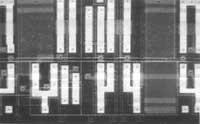Artificial neuronal network
1994/01/01 Florez, Julian | Tapia Otaegi, Arantza Iturria: Elhuyar aldizkaria
From the point of view of cybernetics, in addition to the processing techniques used in the most well-known digital computers, other possibilities appear. One of the most researched directions is the possibility of developing processing systems that use the same behavioral principles and structures that can be found in both humans and other living beings. This has created new computers: neurocomputers. There is an important difference between the two.
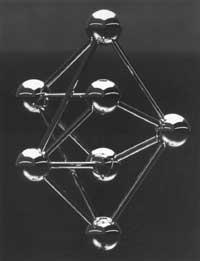
Digital computers are sequential systems designed to handle the symbolic manifestations of everything outside. On the other hand, neurocomputers are parallel structure systems that directly process external information, that is, without using symbolic appearances. To understand what is behind neuroconputation, it is very interesting to understand the principles of neurobiology and its importance in superfast computing.
Fundamentals of neuroconputation
Neurons are nerve cells and neural networks are networks formed by these cells. The brain is a natural example of neural networks. The interest that has always existed for artificial NSA networks (Artificial Neural Networks) was based on anatomical and psychological considerations. The first modelers of artificial neurons tried to show the stimulus/response ratio of biological neurons and also the internal structure of neurons.
That is, in the field of physics and engineering the most outstanding were the “computational characteristics” of neurons. The interest of those working in the fields of logic, mathematics, computer science and physics for this problem has been growing and decreasing over the years, but it is currently at a high level. This is due to the creation of powerful computers that solve problems that cannot be solved with the computer systems used so far.
Basic biological concepts
We currently know that the anatomy of a biological neuron is:
- Structure of horns, with cells called dendrites, which is considered zone of reception of signals from other neurons.
- The body of the cell, called soma.
- Long linear transmission structure called axon.
- Brush structures, called synaptic buttons, located at the end of the Axon tail.
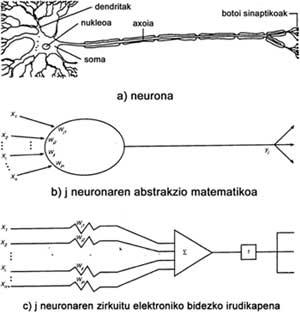
1st. The figure shows the structures of a biological neuron mentioned. 1.b. the image presents the mathematical abstraction of the neuron. In this image x 1, x 2, .., x n, j are inputs that reach the neuron, w ij, synaptic resistances and y j, neurone output. 1.c. Figure 1.b shows the electrical circuit corresponding to the mathematical abstraction of the figure. In this case each x i is voltage and w ij, each is presented with a potentiometer. The triangle with an additive sign inside is an additively configured operational amplifier. The amount f will be any nonlinear function.
2nd. In the image you can see a network of biological neurons. When two neurons in this network are very close, the junction point is called synapsis. The influence of neurons at the contact point is electromechanical. Synapse is not a real physical contact. A signal behaves like an ignition system, that is, it does not pass information until the signal concentration exceeds a limit. When this occurs, potential is generated in the information receiving cell.
When a neuron takes information through synaptic contacts from the sides, it is taken by consecutive pulses. Then the explored sum of the algebraic inputs is performed, the containment function of that sum is computed and the output is created (if the value of the function exceeds the limit value). As in synaptic contacts the transmission is done in one direction, the input and output pulses go from dendrites to the somara, from here to axon and finally to the synaptic buttons. Since the basic computing mechanisms of biological neurons are the weighted sum and containment function, we will try to emulate these biological functions through NSA networks.
It has been estimated that the human brain has a number of neurons between 109 and 1012, among them more than 1015 synaptic contacts. These cells are basic brain information processing units. In addition, it has been estimated that a normal neuron receives information from another 10,000 neurons and sends it to 1,000 neurons if necessary. Despite knowing the behavior of rare neurons and the connections between neurons, their behavior is unknown when neural groups work together.
Therefore, the best thing we can do is to consider that, following the same structure, the behavior of artificial networks will also be somewhat similar. It is impossible to completely follow this structure. However, because it is a network that performs very special functions, NSA can have a simpler structure than the biological neuron. In addition, it is demonstrated that the processing of information that occurs in the brain is not only parallel, but there are also well-placed functions.
According to information extracted from neuropathology, neurohistology and neuropharmacology, the maximum part of computing occurs in approximately 1,000 areas (modules). For example, the ability to speak is associated with the Broca area in the left frontal lobe of the brain, while the ability to understand natural language is associated with the Wernick area, located at the back of the temporal lobe and to the left. Therefore, it can be said that high-level operations are carried out in special areas, in which it communicates in some way. The components involved in the processing of information are considered to be the cerebellum, hippocampus, tonsils, and cerebral cortex.
All this leads us to think that the human brain is a zoned structure based on functions, in which the processing is done in parallel. In addition, it seems that the parallel work of neurons is done asynchronously, that is, without synchronization center (without clock). For these reasons, many think that through the groups that perform parallel processing (asynchronously performing communication between them and the distribution of functions), the neural network would appear better.
Network operation
The process of computing through NSA networks is as follows: (NA) An “artificial neuron” (or (PE) processing element receives inputs from another NA or from an external stimulus. The agitated sum of these entries completes the argument of the activating (or transferring) function. This function that defines neuron characteristics is usually not linear. The result of the activating function is the output of n. This output is divided along the connections of another ID.
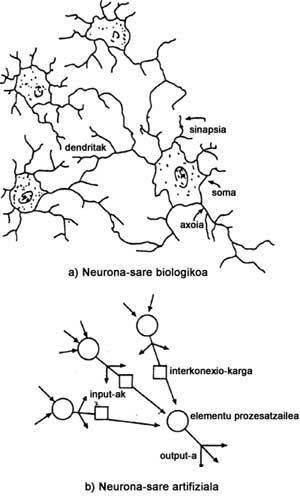
The way these connections are made (i.e. topology) defines the flow of information that occurs over the network and is called network architecture. The most commonly used architectural configurations are those of a layer, multilayer, feedback, pre-power and lateral connectivity. The importance of agitated connections in these architectures is very high, so they are known as connective computing models.
The floor conditioning process during network preparation is called a learning rule. That is, artificial neural network systems are not programmed, they are taught. This learning process can be audited or not audited. The most widely used in audited learning rules is the backward programming method (BP). An unaudited method belongs to self-organization. In short, the three core components of NSA network-based computing systems are transfer function, architecture and learning rule. It must be said that these types of computer models have only the metaphorical appearance of real brains.
When an appropriate computational model is obtained, the implementation of the system can be carried out by using digital, optical or analog computing components as an operating block. A component known among electrical engineers, which behaves somehow like neurons, is an operational amplifier configured as an integrator. If one hundred integrators connected to each other by potentiometer are monitored (potentiometers are synapses), it can be analyzed as a first approximation of an NSA.
The adaptation of these potentiometers to the representation of the learning algorithm would allow a better approximation to the neuronal network. Anyone who knows the functioning of analog computing knows that this computer configuration (and therefore the mathematical model of neuronal network description) is constituted by a group of nonlinear and coupled differential equations. That is, NSAs can be seen as dynamic systems that are programmed. Therefore, the learning process, while the dynamic system reaches a state of minimal energy, can appear as a process of parameter adaptation (differential equation coefficients). In this way, mathematics can be used more widely.
Although the description given above has a good presentation of artificial neuron and NSA, the definition of NSA cannot yet be perfectly defined. NSA can be defined as a distributed computing system with multiple interconnected processing components. Another definition is that the NSA is an adaptive and parallel system with self-learning capacity, capable of processing information.
Differences between biological and artificial neurons
To better understand the above, the differences between networks of biological neurons and artificial neurons will be presented:
- The electronic components used to simulate neurons are very fast, but with little connection. Biological neurons are analog units connected with high density. Being the time constants of these millisecond units, the work of real neurons is slower than that of artificial ones. Artificial neurons create medium-sized output scalars of the pulses produced by biological neurons. When a pulse is transmitted from one neuron to another, it is done at slow speed, ranging from 0.5 to 120 meters in a second. According to these parameters, you cannot know how the brain can perform all the above mentioned works in short measured times. However, there are many researchers who are developing models to perform brain functions.
- A biological neuron causes the neurons that are in contact with it to work or stop, but both cannot be done together. This is said to be the law of Eccles. It seems that NSA systems do not follow this rule.
- The information code of the real nervous system differs from that used by the NSA system. For example, when a biological neuron produces an output, this is a group of consecutive pulses. The frequency of this output is logarithmically related to the algebraic sum of the inputs that reach the neuron. This frequency is about 1 to 100 cycles per second. This indicates that the bits used in the transmission of information between neurons are very few.
- Finally, it seems that real brains are superficial computing structures, that is, with very few layers, with a high degree of similarity. On the other hand, models based on conventional digital computers are sequential and have a deep computational structure.
Future
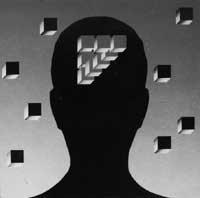
There are currently areas where these neural networks are successfully applying: artificial vision, natural language translators, etc.
However, both the learning process of these networks and the problems associated with their density have not yet been overcome. On the other hand, with VLSI technology (very large scale integration) and the advances that are taking place in optics, optoelectronics and holographic technology, it seems that these problems will be solved.
In this way, the technological revolution that these new types of computers, formed by neuronal and non-digital networks, will influence our daily life will be enormous: security systems, quality control systems, medical field, etc.

Gai honi buruzko eduki gehiago
Elhuyarrek garatutako teknologia



